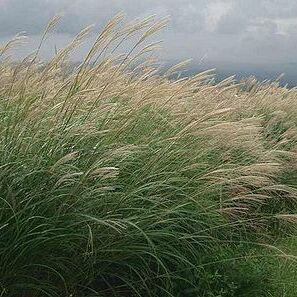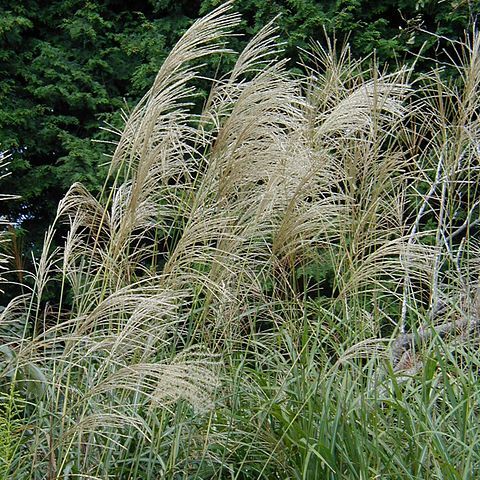Perennial, tufted or rhizomatous. Culms slender to robust, erect, solid. Leaves basal or cauline; leaf blades large, linear, flat, broad or narrow; ligule membranous. Inflorescence a panicle, often large and plumose, of racemes arranged on a long or short axis; raceme axis tough, internodes slender, spikelets paired, both spikelets pedicelled, pedicels slender, flattened, slightly clavate. Spikelets similar, lanceolate, dorsally compressed; callus bearded with hairs shorter than, as long as, or longer than the spikelet; glumes papery or membranous; lower floret usually represented by a hyaline sterile lemma; upper floret bisexual, lemma hyaline, awned or awnless. Stamens 2–3. Caryopsis oblong or ellipsoid.
Spikelets all alike, one of each pair short-pediceled, the other long-pediceled, both eventually deciduous from the summit of the pedicels; rachis of the racemes continuous; glumes subequal; lemmas 2, hyaline, ciliate, shorter than the glumes, the fertile (upper) one often awned, the sterile one a little larger but awnless; tall perennials with numerous long racemes aggregated to form a silky terminal panicle. 20, warmer parts of the Old World.
Inflorescence a panicle (but subdigitate in Asia), often large and plumose, bearing numerous racemes on its branches; raceme rhachis tough with slender internodes.
Spikelets alike, paired, both pedicelled, lanceolate to narrowly oblong, barbate from the callus.
Superior lemma entire or bidentate, with or without a short awn; stamens 2–3.
Inferior glume thinly coriaceous, broadly convex.
Inferior floret represented by a hyaline lemma.


